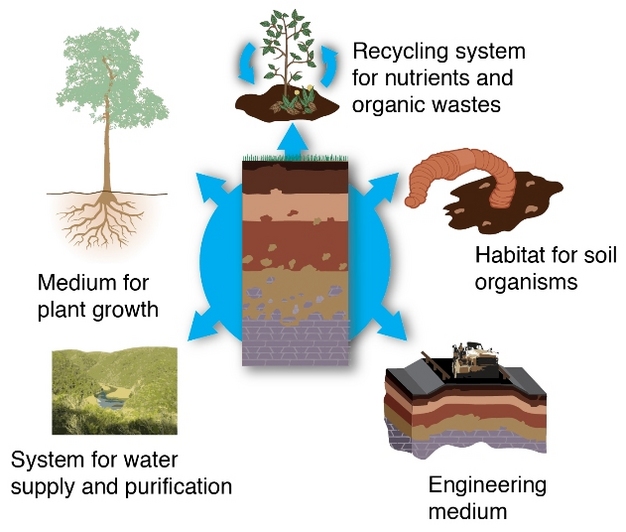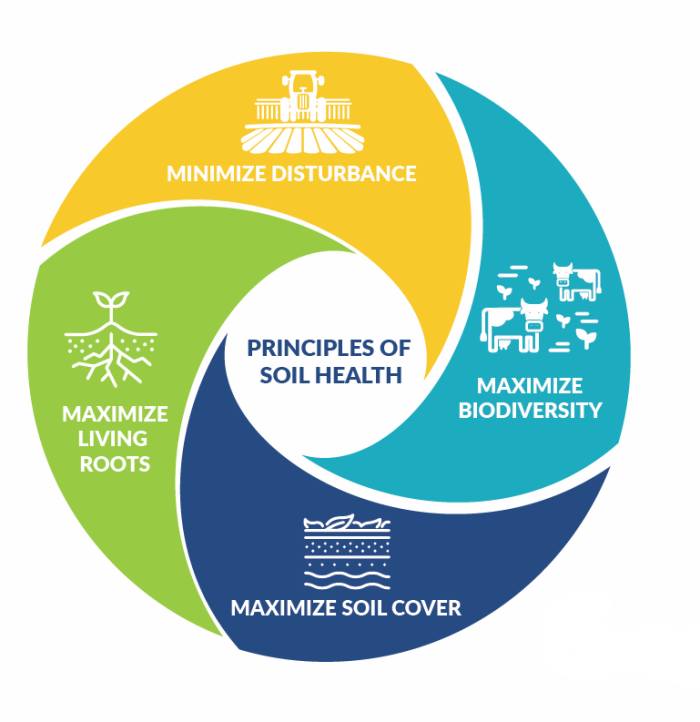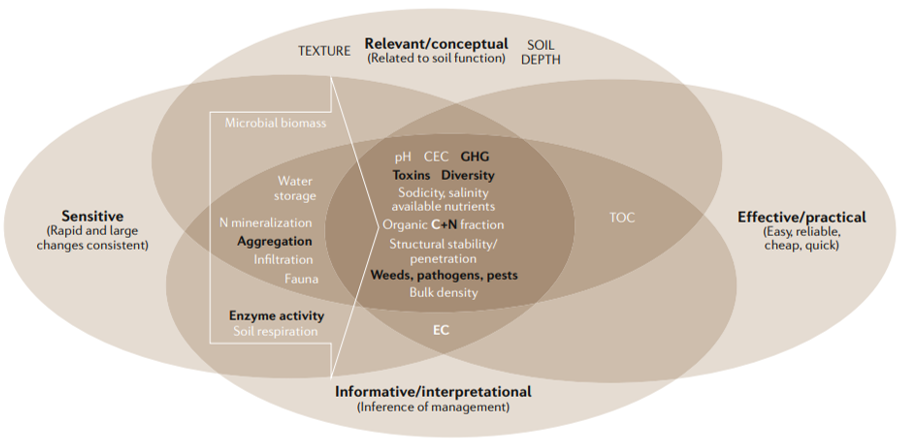Soil health
Definition
Soil health is defined as the continued capacity of soil to function as a vital living ecosystem that sustains plants, animals, and humans (USDA-NRCS). Healthy soils play an important role in providing five essential functions as shown in the figure below (Needelman, 2013).

Manage for healthier soil
The figure below was created by United States Department of Agriculture that summarized four ways to manage soil in order to improve soil health.

Soil health assessment
Soil health is not directly measured by crop yield, water quality, or other single outcome. Instead, it is evaluated using multiple measurable indicators related to soil or plants that provide clues about soil health and soil functions (USDA-NRCS). USDA-NRCS provided five criteria as useful indicators, including easy to measure, able to measure changes in soil functions, encompassing chemical, biological, and physical properties, accessible to many users and applicable to field conditions, and sensitive to variations in climate and management. Soil health indicators are also summarized into four categories in the figure below (Lehmann et al., 2020) in terms of conceptual, practical, interpretational, and sensitive.
Commonly used indicators:
- Soil organic matter
- Physical: bulk density, infiltration, soil structure and macropores, soil depth, and water holding capacity
- Chemical: electrical conductivity, reactive carbon, soil nitrate, soil pH, and extractable phosphorus and potassium
- Biological: earthworms, microbial biomass C and N, particulate organic matter, potentially mineralizable N, soil enzymes, soil respiration, and total organic carbon

